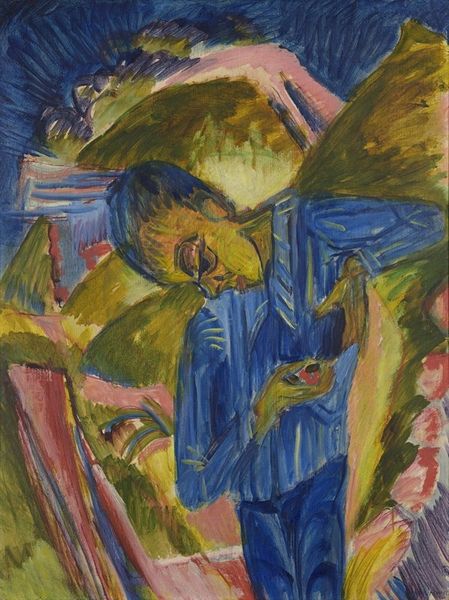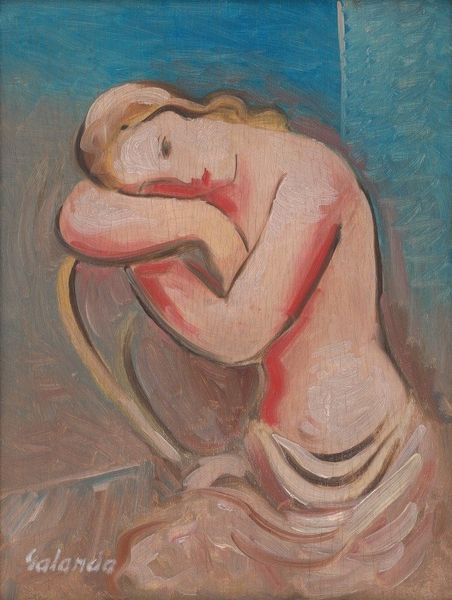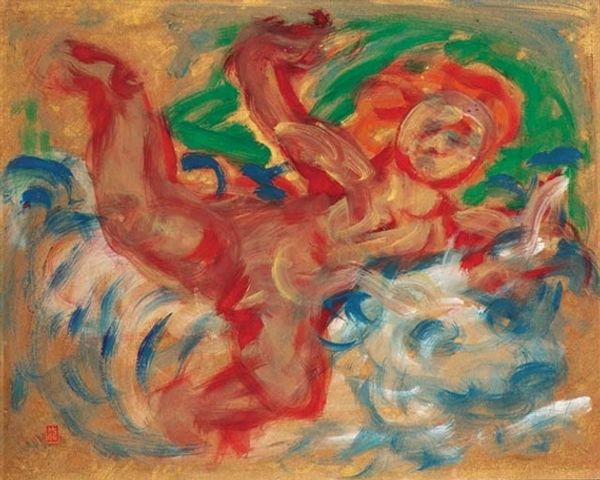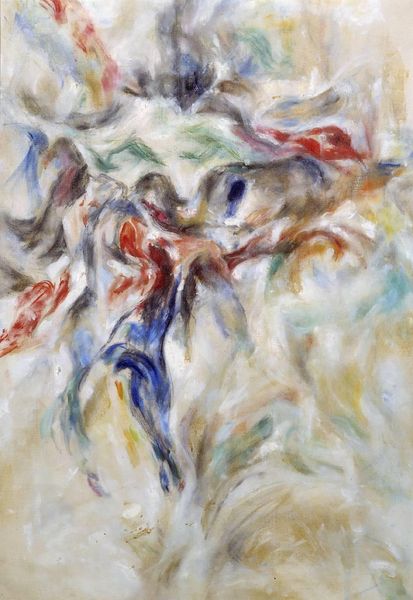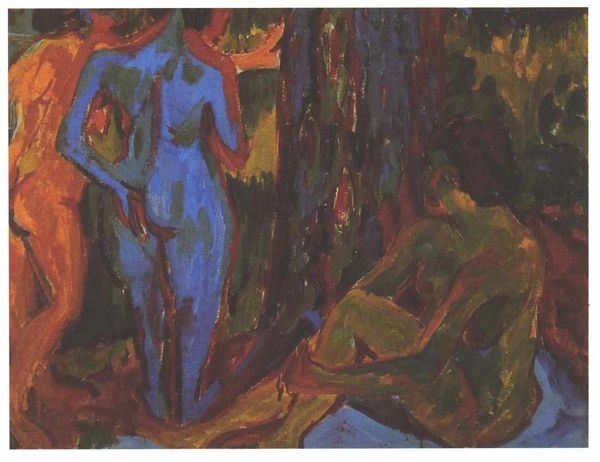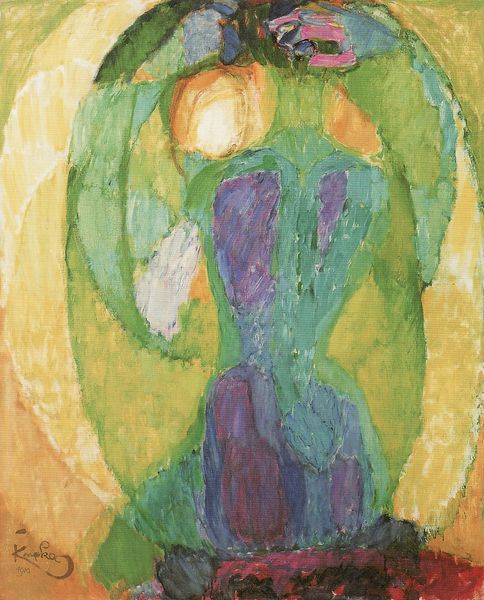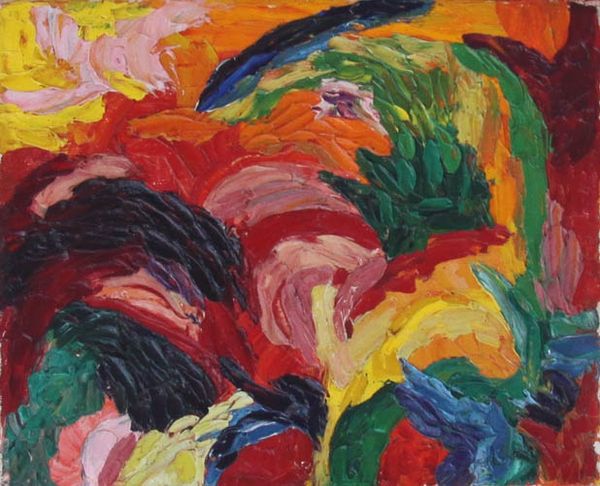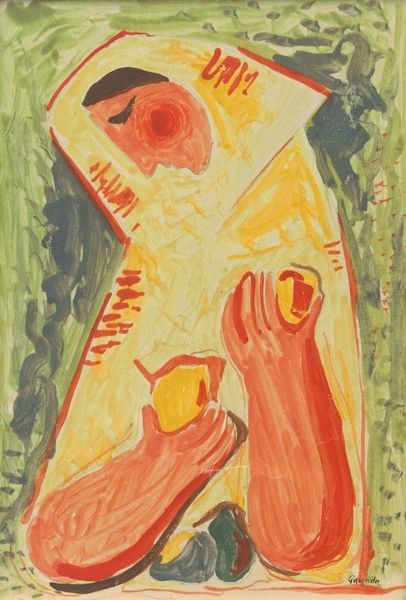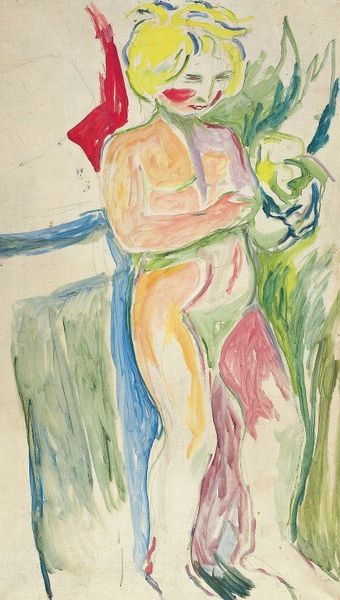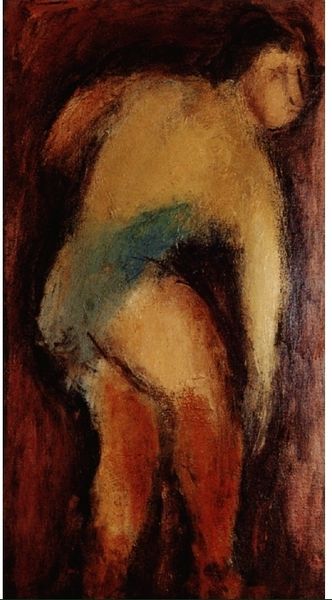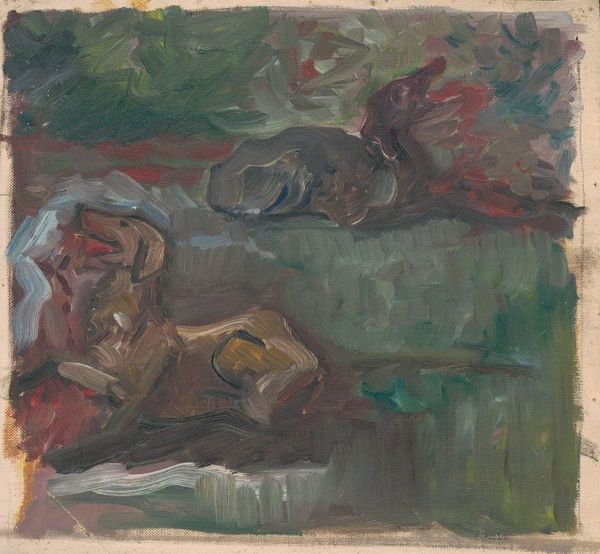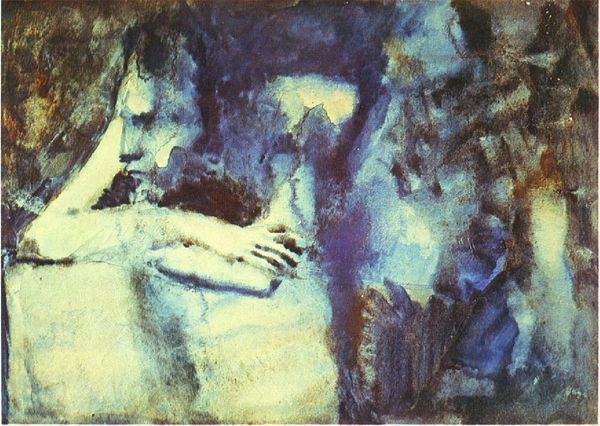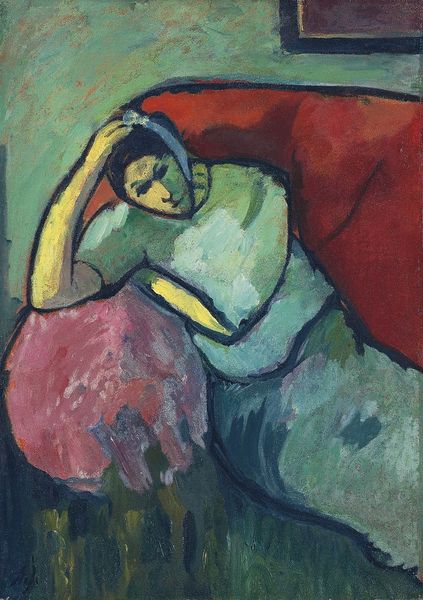
painting, watercolor
#
portrait
#
painting
#
canvas painting
#
figuration
#
watercolor
#
expressionism
#
symbolism
Copyright: Public Domain: Artvee
Curator: Immediately, I'm struck by the mood—that overhanging gloom seems ready to drown the figures locked in this embrace. It is incredibly melancholic. Editor: Let's dive in. This piece is titled "Vampyr," dating to 1916-1918, brought to life by the renowned Edvard Munch, largely known for "The Scream." Executed using watercolor on canvas, the materials add to its delicate, haunting character. Curator: "Vampyr"—the title alone drips with symbolism, doesn't it? We are looking, clearly, at an act of emotional vampirism—or perceived vampirism, at least. A woman’s fiery hair almost merges into what could be a wound-like form. Is she giving life, or taking it? That’s the eternal question. Editor: It's ambiguous, definitely. I see the woman almost as a Medusa figure. Her vibrant red hair contrasts against the darkness, drawing the viewer in like a flame to a moth. Her embrace appears more like a smothering, possessive grip, as if consuming all of his vitality and passion. Curator: Precisely. Munch’s works are riddled with portrayals of complex—sometimes downright torturous—relationships. We need to look at his emotional landscape to truly understand his artistic one. I mean, the artistic rendering and palette used almost create a halo effect, an ironic or parodic interpretation that reinforces a deeper layer. Editor: Munch was undoubtedly fascinated with psychological dramas—his life experiences molded how he presented himself and others, painting those wounds for us to witness and ponder. What I feel when looking at "Vampyr" is a resonance within us. Haven’t we all been both the vampire and the victim at some point? Curator: It’s in the human condition. Through his emotionally charged portrayal, the vulnerability shines, creating that strange magnetic pull despite its inherent darkness. Editor: Absolutely. It resonates precisely because those raw emotions are universally felt. There’s a disturbing beauty within this composition—a glimpse of human despair intertwined with hope, painted beautifully by Munch’s talented hand. It is one artwork, among many others, of a tormented and fascinating soul. Curator: Indeed. An insightful study that exposes what it truly means to feel—even when that feeling teeters close to suffering. It offers endless interpretations of human interplay with no neat and easy answer to provide—but something of vital importance to ponder.
Comments
No comments
Be the first to comment and join the conversation on the ultimate creative platform.
